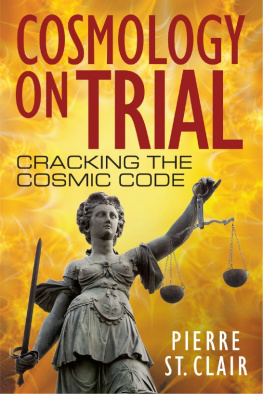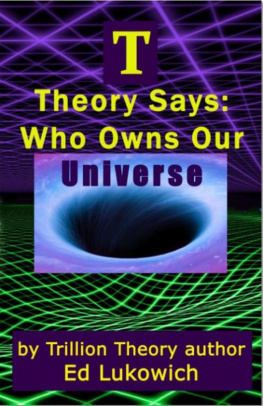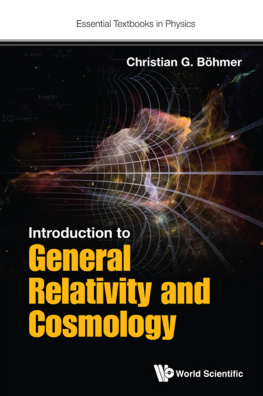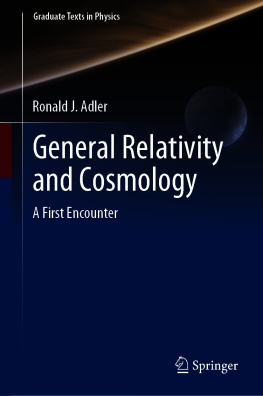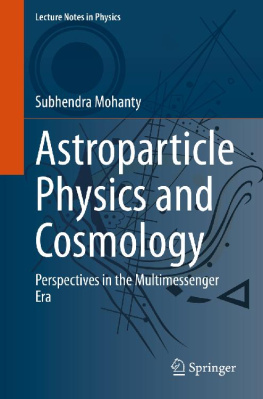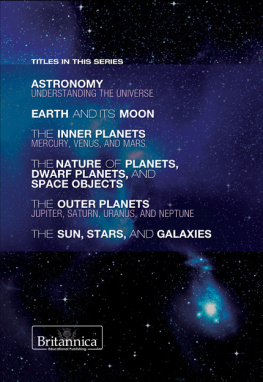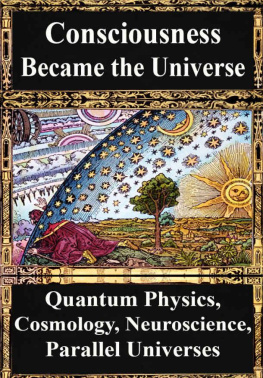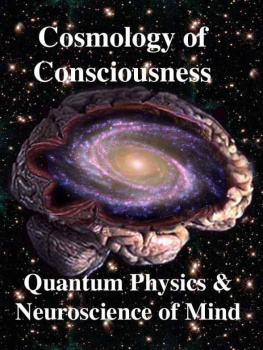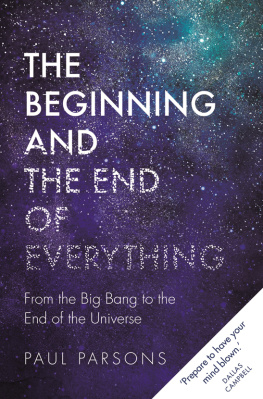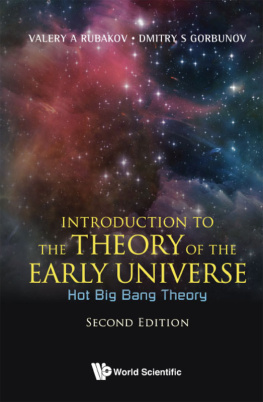Foundations of Modern Cosmology
Foundations of Modern Cosmology
Second Edition
John F. Hawley and Katherine A. Holcomb
University of Virginia


Great Clarendon Street, Oxford OX2 6DP
Oxford University Press is a department of the University of Oxford.
It furthers the Universitys objective of excellence in research, scholarship,
and education by publishing worldwide in
Oxford New York
Auckland Cape Town Dares Salaam Hong Kong Karachi
Kuala Lumpur Madrid Melbourne Mexico City Nairobi
New Delhi Shanghai Taipei Toronto
With offices in
Argentina Austria Brazil Chile Czech Republic France Greece
Guatemala Hungary Italy Japan Poland Portugal Singapore
South Korea Switzerland Thailand Turkey Ukraine Vietnam
Oxford is a registered trade mark of Oxford University Press
in the UK and in certain other countries
Published in the United States
by Oxford University Press Inc., New York
Oxford University Press, 2005
The moral rights of the authors have been asserted
Database right Oxford University Press (maker)
First published 2005
All rights reserved. No part of this publication may be reproduced,
stored in a retrieval system, or transmitted, in any form or by any means,
without the prior permission in writing of Oxford University Press,
or as expressly permitted by law, or under terms agreed with the appropriate
reprographics rights organization. Enquiries concerning reproduction
outside the scope of the above should be sent to the Rights Department,
Oxford University Press, at the address above
You must not circulate this book in any other binding or cover
and you must impose the same condition on any acquirer
British Library Cataloguing in Publication Data
Data available
Library of Congress Cataloging in Publication Data
Data available
Printed in Great Britain
on acid-free paper by
Biddles Ltd., Kings Lynn, Norfolk
ISBN 0-19-853096-X (Hbk) 9780198530961
10 9 8 7 6 5 4 3 2 1
To our parents and other teachers
Preface to the Second Edition
Since the publication of the first edition of this text, the field of cosmology has undergone dramatic changes. Einsteins cosmological constant, once relegated to the status of a historical artifact, has reemerged in the form of dark energy as a significant dynamical element in the cosmos. The long-standing question of the geometry of the universe has apparently been answered by data from the Wilkinson Microwave Anisotropy Probe: the universe is flat. The matter content of the universe is around 30% of the critical value, with the balance supplied by the dark energy. Only a fraction of the matter is composed of baryons. Although the nature of this unknown dark matter remains elusive, new experimental results have ruled out the neutrino, while at the same time establishing that the neutrino does possess a small nonzero rest mass. Extensive new galaxy redsift surveys are providing new data on large-scale clustering that are essentially in agreement with the new consensus. Some cosmologists have even begun to speak of an era of precision cosmology. Even if we have not yet truly reached a time when cosmological parameters can be measured to two significant digits, it was not so long ago when cosmologists were satisfied for measurements to agree within a factor of two.
For many years the instructional style in cosmology was to present the basic ideas behind the perpetually unanswered cosmological questions. Now for the first time we are confronted by cosmological answers, and that can be unsettling to those who are content to catalog and contrast varieties of speculative cosmological models. In this edition we have updated the text to reflect the new consensus and to present some of the exciting new observational results of the last few years. Although it is undoubtedly the case that the current concordance model will continue to be refined, we have chosen to take this model seriously as the current best description of the structure of the universe. This has led to some de-emphasis of alternative models. The original aim of this text remains unchanged, however; namely, to present the foundations of modern cosmology.
Every chapter in the text has been revised and updated, and the illustrations have been improved throughout. The overall sequence is essentially unchanged from the first edition, but some modifications have been made to accommodate new material and increase the instructors flexibility. concludes the book with a brief discussion of quantum cosmology and speculations beyond the limits of current theory.
Several new pedagogical features have been added. Each chapter now has marginal notes that highlight key concepts. Chapter summaries are now provided as well. The key terms are listed at the beginning of each chapter, with definitions given at the end of the chapter. In addition, all key terms are defined in a glossary at the back of the book.
We have attempted to correct all the errors and other inadequacies of the first edition, both those discovered by us and those brought to our attention by helpful colleagues. It is perhaps inevitable that new ones will have been introduced in the process of revision, but we hope that none will be beyond the ability of the instructors or the students to handle. Another concern is that the rapid pace of cosmological discovery will continue over the coming years, and that this edition will become outdated even more quickly than the first. We can at least hope that this will prove to be the case.
December, 2004 | JOHN F. HAWLEY |
Charlottesville, Virginia | KATHERINE A. HOLCOMB |
Preface to the First Edition
Recent discoveries in astronomy, especially those made with data collected by satellites such as the Cosmic Background Explorer and the Hubble Space Telescope, have brought cosmology to the forefront of science. New observations hold out the tantalizing possibility that the solutions to some especially elusive mysteries might be found in the near future. Despite an increase in public interest in black holes and the origins of the universe, however, the unavoidable lack of context with which discoveries are reported prevents most people from understanding the issues, or appreciating the true significance of the new data. Popular books on cosmology abound, but often they present the subject as a series of just so stories, since some basic physics is a prerequisite for comprehending how cosmology fits into modern science. The lay reader may well have trouble distinguishing knowledge from speculation, and science from mythology. Furthermore, the popular literature often emphasizes the more exotic aspects of the field, often at the expense of the firmly grounded achievements of modern cosmology.
Cosmology holds an intrinsic interest for many college students, who are granted, as part of their general education, the time and opportunity to learn more about the scientific discoveries they see described in newspapers and magazines. Most colleges and universities offer a comprehensive introductory astronomy course, with the primary objective of offering science to as broad a population of students as possible. Topics such as relativity, black holes, and the expanding universe are typically of particular interest, but they are covered in a cursory fashion in most introductory courses and texts. In our experience, there is always a sizable number of students who find astronomy sufficiently interesting that they wish to continue their study of the subject at a comparable technical level, but with greater depth. With little but astronomy-major or graduate-level courses available, however, such students often have no such opportunities. These students, who are genuinely interested in learning more about these topics, deserve the opportunity to further their learning, and to do so in a serious way.
Next page

